One of America’s favorite sandwiches, with a slice of cheese, is honored on September 18th – National Cheeseburger Day!
National Cheeseburger Day is not only a day to honor one of your favorite meals, but to educate yourself on the special care needed when handling and cooking ground beef to prevent foodborne illness.
Use the hashtag #NationalCheeseburgerDay on social media and Twitter to find cheeseburger deals!



Brief History of the Cheeseburger
There are many theories to the beginning of the cheeseburger dating back to the 1920s. One story suggests that Lionel Sternberger is reputed to have invented the cheeseburger in 1926 while working at his father’s Pasadena, California sandwich shop, The Rite Spot. During an experiment, he dropped a slice of American cheese on a sizzling hamburger – and the cheeseburger was born!
- Learn about proper hygiene, cross contamination, cold and hot food safety, foodborne pathogens, and best practices to prevent foodborne illness.
- Food Manager Training & ANSI Certification - $99.00
- Food Handler Training - only $7.00!
- HACCP Training: 16hr/4hr/1hr
- Food Allergy Training - $15.00
- Enter Promo "train10off" at Checkout
Ground Beef: 160°F
Why is bacteria of special concern for ground beef?
All meat potentially contains bacteria that—if not destroyed by proper cooking—can cause food poisoning, but some meats are more risky than others.
If bacteria are present when beef is ground, then more of the meat surface is exposed to the harmful bacteria. Also, grinding allows any bacteria present on the surface to be mixed throughout the meat.
To destroy harmful bacteria, cook ground beef to a safe minimum internal temperature of 160°F.
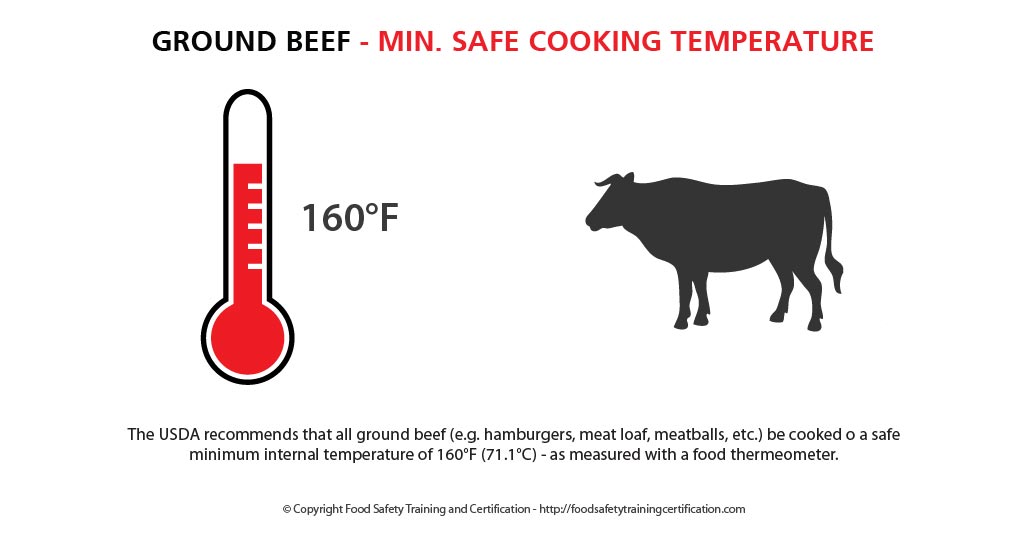


What kind of bacteria can be in ground beef?
The pathogenic (illness-causing) bacteria generally found in ground beef are E. coli and Salmonella. These harmful bacteria cannot be seen or smelled.
Avoid Cross Contamination
Keep raw and ready-to-eat meats separate. Make it a household rule to use the refrigerator meat drawer for ready-to-eat foods, like cheese and deli meats, and do not store raw foods here. (Or, if you use the meat drawer for raw meats, store ready-to-eat foods in another location in the refrigerator.)
Wash hands thoroughly before and after handling raw ground beef. Wash cutting boards, bowls, and utensils used to prepare raw ground beef with hot soapy water and rinse well. As an extra precaution, a solution made from one teaspoon of unscented chlorine bleach in one quart of water can be used to sanitize the clean kitchen tools.
Use separate plates to carry raw ground beef patties to the cooking area and cooked patties to the serving area.
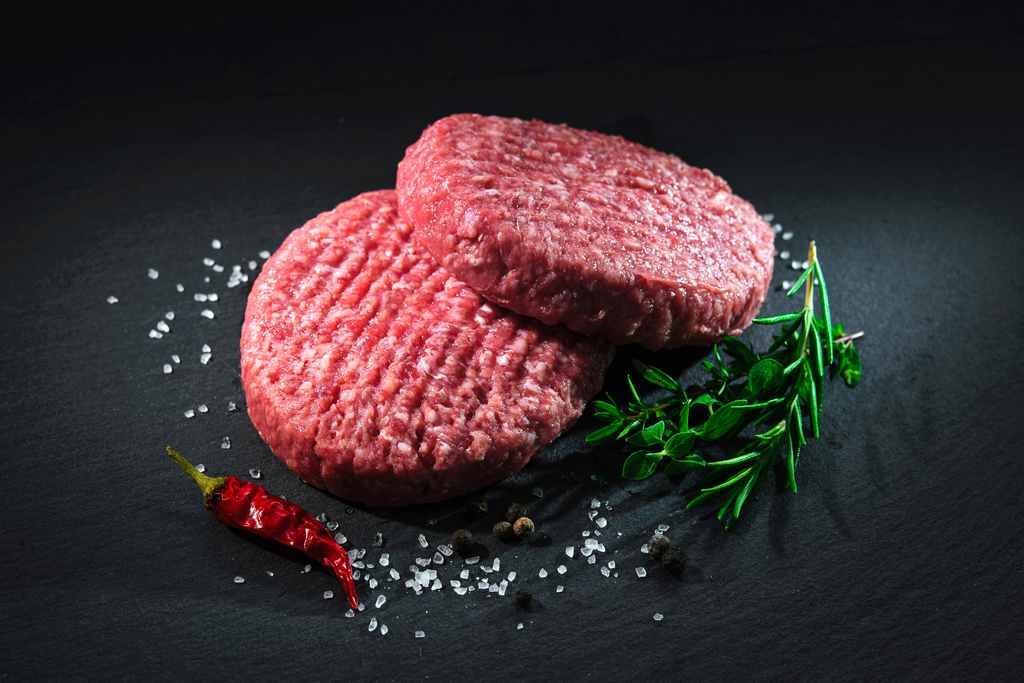


Temperature Danger Zone
Bacteria multiply rapidly in the “Danger Zone” — temperatures between 40°F and 140°F.
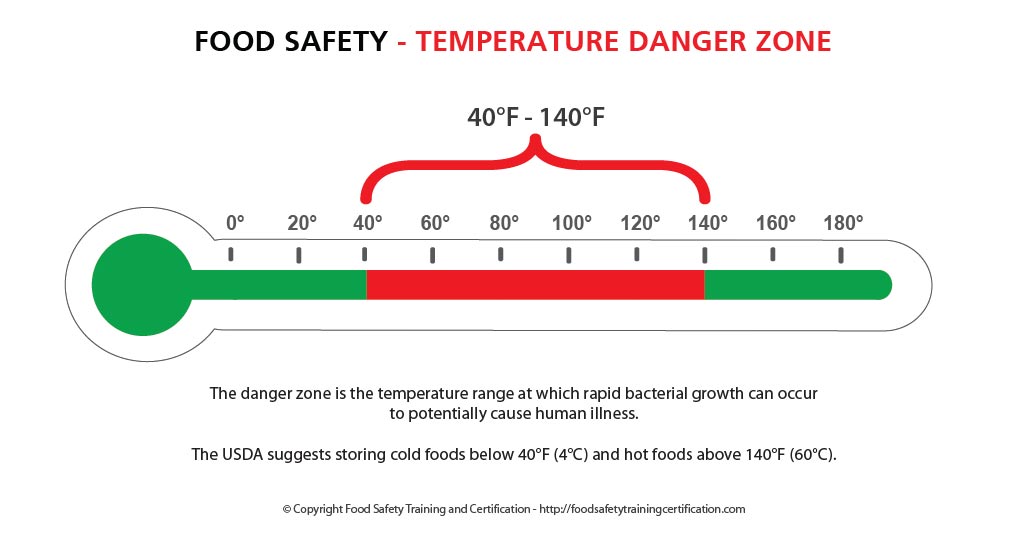


Four Basic Food Safe Steps
In every step of food preparation, follow the four basic rules — Clean, Separate, Cook, and Chill.
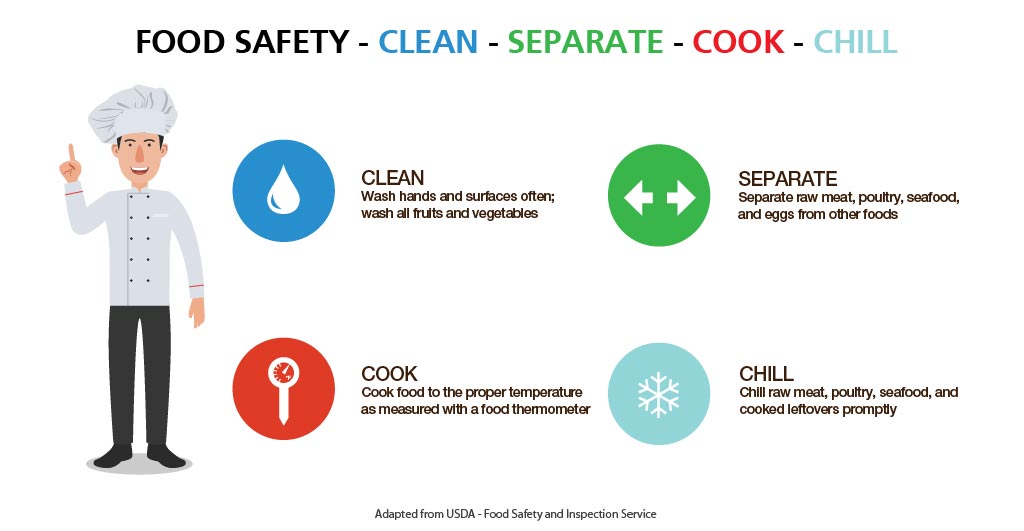


CLEAN. Wash hands and surfaces often. Unless you wash your hands, utensils, and surfaces the right way, you could spread bacteria to your food, and your family. Wash your hands with soap and warm water for 20 seconds before and after handling ground beef to make sure you don’t spread bacteria.
SEPARATE. Don’t cross-contaminate. Even after you’ve cleaned your hands and surfaces thoroughly, raw ground meat can still spread illness-causing bacteria to ready-to-eat foods-unless you keep them separate.
COOK. Cook to the right temperature. To destroy harmful bacteria, cook ground beef to a safe minimum internal temperature of 160°F (71.1°C) as measured with a food thermometer.
CHILL. Refrigerate promptly. Illness-causing bacteria can grow in perishable foods within 2 hours unless you refrigerate them.
Symptoms of Foodborne Illness
- Common symptoms of foodborne illness are diarrhea and/or vomiting, typically lasting 1 to 7 days. Other symptoms might include abdominal cramps, nausea, fever, joint/back aches, and fatigue.
- What some people call the “stomach flu” may actually be a foodborne illness caused by a pathogen (i.e., virus, bacteria, or parasite) in contaminated food or drink.
- The incubation period (the time between exposure to the pathogen and onset of symptoms) can range from several hours to 1 week.


People with Increased Risk for Foodborne Illness
Foodborne illness can affect anyone who eats contaminated food. However, certain populations are more susceptible to becoming ill with a greater severity of illness. These groups include:
- Pregnant women;
- Infants and young children;
- Older adults;
- People taking certain kinds of medications or with immune systems weakened from medical conditions, such as diabetes, liver disease, kidney disease, organ transplants, HIV/AIDS, or from receiving chemotherapy or radiation treatment.
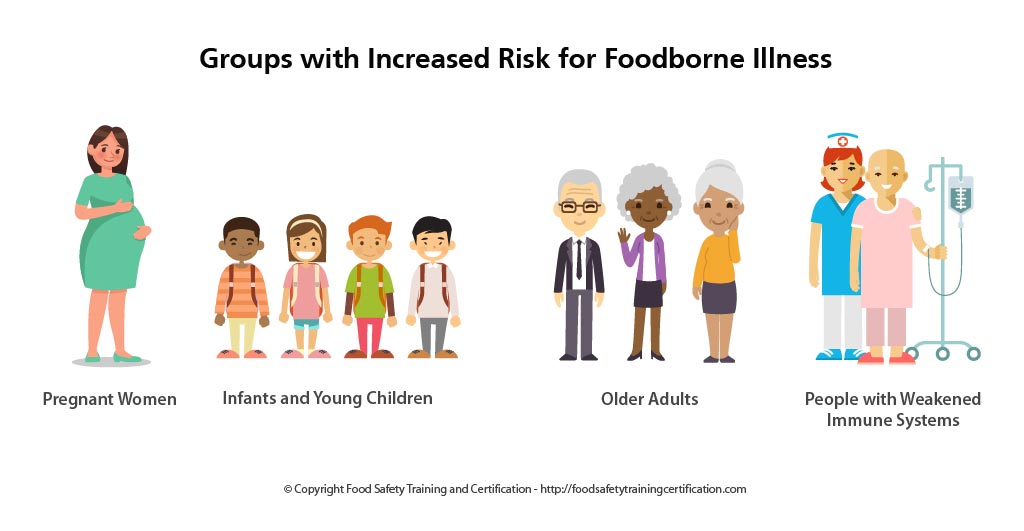


Most people with a foodborne illness get better without medical treatment, but people with severe symptoms should see their doctor.
Summary
Happy National Cheeseburger Day! Not only a day to honor one of your favorite meals, but to educate yourself on the special care needed when handling and cooking ground beef to prevent foodborne illness.
Use the hashtag #NationalCheeseburgerDay on social media to find cheeseburger deals!






